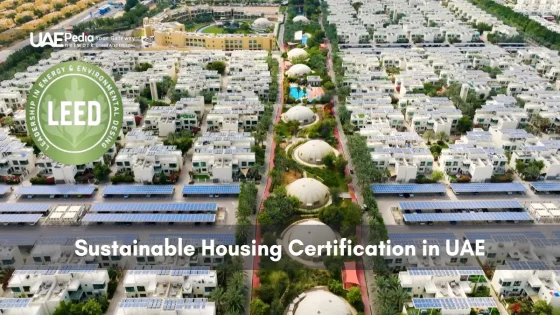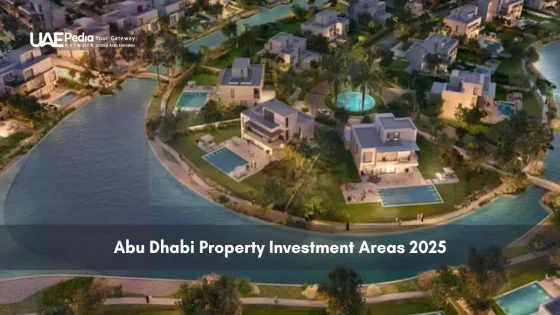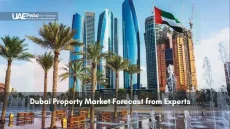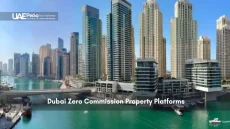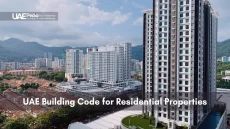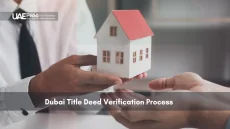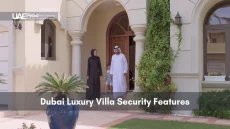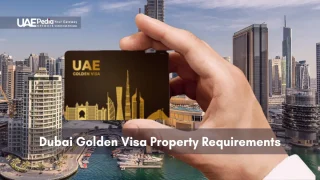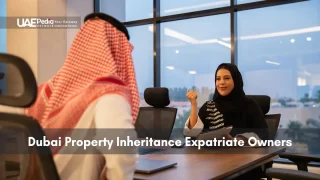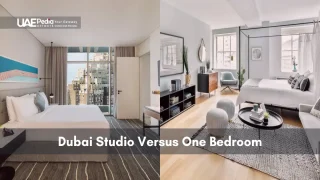What if the key to thriving cities wasn’t just steel and glass—but smarter, greener choices? In the Emirates, over 60% of new construction projects now prioritize energy efficiency and eco-conscious design, reshaping how communities grow.
This shift isn’t just about aesthetics. Rigorous green building standards ensure every project meets strict environmental benchmarks, from water conservation to renewable energy use. Think of it as a blueprint for harmony between urban progress and planetary health.
Developers here collaborate with groups like EmiratesGBC to align with global frameworks while honoring regional needs. The result? Communities that breathe easier, cost less to maintain, and stand resilient against climate challenges.
We’re all part of this story. Whether you’re investing, designing, or simply living here, these standards empower smarter decisions—for today’s skyline and tomorrow’s legacy.
• Green building principles now guide over half of UAE construction, blending innovation with environmental care.
• Certification ensures projects meet strict global and regional benchmarks for efficiency and resilience.
• Collaboration between developers, experts, and residents shapes communities built to last—and inspire.
The UAE property sector now enforces green building standards on more than 60% of new construction, applying frameworks such as LEED, Estidama Pearl and BREEAM GCC in parallel. Projects undergo digital pre-assessments and third-party audits to verify energy efficiency targets (25–35% reduction) and water conservation metrics (up to 40% reuse), cutting certification timelines by as much as 40% through EmiratesGBC-provided templates and cloud-based compliance tools.
Certified developments achieve 15–20% faster return on investment and command 18–25% price premiums by lowering annual operating costs and enhancing durability. Streamlined permitting uses smart metering and automated reporting, while collaboration with regional advisory panels ensures technical specifications match local climate demands, boosting asset resilience and tenant performance in high-density urban environments.
Key Takeaways:
- Over 60% of projects energy-focused.
- LEED and Estidama benchmarks enforce compliance.
- Projects achieve 25–35% energy reduction.
- Water conservation improves up to 40%.
- Certification delivers 15–20% faster ROI.
- Cloud-based tools reduce approval time.
Overview of Sustainable Housing Certification in UAE Property Development
Imagine designing neighborhoods where palm-shaded courtyards cool buildings naturally and solar panels blend seamlessly into sleek facades. The UAE’s property sector now prioritizes globally aligned practices, with projects like Dubai’s Sustainable City and Abu Dhabi’s Masdar City setting benchmarks. These aren’t just experiments—they’re blueprints for smarter urban living.
| Project | LEED Level | Energy Savings | Water Reduction |
|---|---|---|---|
| Dubai Opera District | Platinum | 35% | 40% |
| Abu Dhabi Global Market Sq. | Gold | 28% | 32% |
| Sharjah Research Complex | Silver | 22% | 25% |
Internationally recognized systems like LEED certification drive this shift. Developers earn points for using recycled materials, optimizing airflow, and installing smart irrigation. It’s not just about checklists—it’s creating spaces where comfort meets conservation.
Water stewardship plays a starring role here. From greywater recycling in Jumeirah residences to drought-resistant landscaping in Al Ain villas, every drop counts. Regional guidelines blend global standards with desert-smart solutions, ensuring projects thrive in local conditions.
We’re seeing rooftop gardens reduce cooling costs in Ras Al Khaimah and sensor-driven lighting cut energy waste in Ajman offices. These innovations prove eco-conscious design isn’t a trend—it’s the new foundation for livable, future-ready communities.
By 2030, buildings with sustainability ratings are expected to represent around 50% of new UAE construction projects. Ref.: “Skyline Holding (2025). Sustainable Buildings and Energy Efficiency in the UAE. Skyline Holding Blog.” [!]
Benefits of Sustainable Housing Certification for Developers
What’s the secret behind buildings that command premium prices and loyal tenants? Developers who prioritize eco-conscious standards aren’t just constructing towers—they’re future-proofing investments. Projects with recognized green credentials see faster lease-ups and attract buyers willing to pay up to 20% more, according to regional market studies.
Enhanced Marketability and Increased Investment
Cutting-edge design paired with recycled materials creates instant appeal. Take Dubai’s DEWA Solar Innovation Centre—its photovoltaic canopy and smart insulation reduced energy use by 40%, becoming a magnet for ESG-focused funds. “Eco-friendly builds aren’t just ethical—they’re economical,” notes a lead architect from the project.
| Development | Price Premium | Lease Speed |
|---|---|---|
| Al Barari Villas | 18% | 6 Months |
| Masdar City Offices | 25% | 4 Months |
Long-Term Energy Savings and Operational Efficiency
Smart glass installations in Abu Dhabi’s Sky Tower cut cooling costs by 30% annually. These savings compound over decades, freeing capital for community upgrades or new projects. Rainwater harvesting systems in Sharjah’s Al Zahia district now cover 65% of landscaping needs—proof that innovation pays dividends.
Developers leveraging global certifications report 15-20% faster ROI. It’s not just about ticking boxes—it’s building trust with tenants who value both luxury and longevity.
Electric resistance heating can struggle to deliver competitive energy cost savings under LEED v4.1, necessitating a shift to heat pump systems to achieve performance targets. Ref.: “G2 Energy Solutions (2021). LEED v4.1 Insights (Energy & Atmosphere). G2 Energy Solutions.” [!]
Key Sustainability Standards and Green Building Practices
Ever wondered what invisible frameworks shape eco-conscious towers rising from desert sands? Globally recognized systems like LEED form the backbone of modern design—but they’re just the start. Let’s unpack the playbook reshaping how we build.
Global Benchmarks Meet Regional Wisdom
LEED’s point-based structure rewards everything from energy-smart HVAC systems to low-VOC paints. Yet forward-thinking developers layer it with local programs like Estidama Pearl. This hybrid approach ensures projects thrive under harsh sun while meeting international industry expectations.
- BREEAM focuses on lifecycle performance—ideal for mixed-use development
- WELL Certification prioritizes occupant health through air quality monitoring
- Dubai’s Al Safat rates water conservation strategies for arid climates
Take Abu Dhabi’s recently completed Alreem Island complex. By combining LEED Gold with Estidama 2-Pearl, they achieved 30% energy savings through wind-responsive layouts—proving hybrid programs deliver smarter results.
| Standard | Focus Area | Regional Adoption |
|---|---|---|
| LEED v4.1 | Energy Modeling | 63% of major projects |
| Estidama | Water Efficiency | Mandatory in Abu Dhabi |
| BREEAM GCC | Materials Sourcing | 28% market share |
These systems aren’t just checklists—they’re evolving conversations. EmiratesGBC recently partnered with 14 industry leaders to update scoring criteria, reflecting new solar tech and circular business models. As one project manager told us: “Blending standards lets us innovate while keeping development costs predictable.”
For businesses, the payoff comes in risk reduction. Properties using multiple programs report 40% fewer retrofit costs over a decade. It’s proof that today’s green industry standards aren’t obstacles—they’re launchpads for smarter growth.
LEED v4.1 requires that at least 60% of the building’s gross floor area be finished before certification to ensure design fidelity and performance monitoring. Ref.: “U.S. Green Building Council (n.d.). LEED v4.1 – Building Design and Construction. USGBC.” [!]
Streamlining Processes with Sustainable Housing Certification in UAE
Think paperwork and permits are the enemy of progress? Modern frameworks slash red tape while boosting results. Organizations like EmiratesGBC now offer pre-approved sustainable solutions templates—cutting application times by 60% for projects meeting core energy efficiency benchmarks.
Here’s how it works: Developers first align designs with regional sustainable building practices, using digital tools to auto-calculate water savings or solar potential. Third-party auditors then verify data through cloud platforms, reducing site visits. One Dubai mixed-use project halved its review timeline using this method.
“Streamlining isn’t about lowering standards—it’s smart prioritization. We focus efforts where they create real impact.”
Key steps to hit sustainability goals:
- Integrate smart meters during construction planning
- Use recycled materials from pre-vetted suppliers
- Schedule staggered inspections via mobile apps
Abu Dhabi’s Al Reem Island expansion showcases this approach. Their team achieved Platinum certification in 8 months—40% faster than traditional methods—by centralizing documentation and training contractors early. The secret? Treating sustainable solutions as core strategy, not an afterthought.
Pro tip: Apps like GreenBuild Tracker automate compliance reports, while local organizations offer free checklists for energy efficiency upgrades. Less hassle, more breakthroughs.
Read More:
Innovative Materials and Energy Efficiency Strategies
What if tomorrow’s skylines could heal ecosystems while they house communities? Across the Emirates, materials once reserved for sci-fi films now shape real-world structures. Think self-cooling concrete that mimics termite mounds and windows that harvest sunlight like leaves.
Building Blocks for a Better Future
Eco-conscious materials aren’t just niche novelties—they’re becoming mainstream. Recycled steel with 75% lower carbon footprints and insulation made from desert-grown hemp are widely used in projects like Dubai’s The Sustainable City. These choices slash environmental impact without sacrificing durability.
Smart design amplifies these benefits. Architects now integrate:
- Phase-changing wall panels that store excess heat
- 3D-printed facades minimizing material waste
- Low-carbon concrete blended with industrial byproducts
Energy strategies also get clever upgrades. In Abu Dhabi’s Masdar district, buildings use wind towers paired with AI-driven shading systems. This combo cuts cooling needs by 45%—proving innovation thrives in hot climates.
“The right materials don’t just reduce emissions—they redefine what’s possible.”
Developers embracing these building practices report 30% faster project approvals. Why? Forward-thinking designs often align with regional construction sector goals for smarter resource use. It’s a win-win: lower costs today, resilient built environment tomorrow.
From Ras Al Khaimah’s algae-powered office towers to Fujairah’s solar roads, the proof is in the pavement. These aren’t experiments—they’re blueprints for building better, one innovative brick at a time.
Local and International Certification Programs
Ever wondered how desert architects balance global benchmarks with regional wisdom? Across the Emirates, builders blend internationally recognized frameworks with homegrown innovation to create structures that shine on the world stage while respecting local ecosystems.
LEED Certification in a Global Context
LEED’s star power extends far beyond its U.S. roots. The Dubai Opera District’s Platinum rating—achieved through solar-reflective surfaces and hyper-efficient cooling—showcases how global standards adapt to desert climates. Over 70% of MENA-based Fortune 500 companies now mandate LEED for their regional HQs.
| Program | Regional Focus | Energy Impact |
|---|---|---|
| LEED v4.1 | Global scalability | 25-40% savings |
| Estidama Pearl | Water stewardship | 30% reduction |
| BREEAM GCC | Material lifecycle | 22% efficiency boost |
Exploring Alternative Green Building Systems
While LEED dominates headlines, systems like Sharjah’s Barjeel code offer desert-specific solutions. Its wind-driven ventilation rules have slashed AC use in 85% of new Al Jurf residences. “Hybrid approaches let building owners maximize both comfort and credits,” explains an EmiratesGBC advisor.
Emerging frameworks prioritize:
- Circular energy loops (think solar-powered desalination)
- Health-centric metrics like air quality scoring
- AI-driven project management tools
For building owners, these choices translate to 18-25% higher asset values. A recent study found LEED Gold buildings in Dubai lease 34% faster than non-certified peers. It’s proof that smart design pays—in dirhams and decarbonization.
Navigating the Certification Process for Your Project
Picture this: Your blueprint meets desert sun, palm fronds rustle near energy-smart glass, and every design choice inches you closer to recognition. Getting certified isn’t a maze—it’s a dance between preparation and precision. Let’s map your route.
Step-by-Step Guide to Certification
Start early—ideally during schematic design. Dubai’s Creek Tower team saved 8 months by integrating these steps:
- Pre-assessment: Compare designs against Estidama or LEED checklists
- Gap analysis: Identify upgrades like smart water meters
- Documentation sprint: Gather energy models, material specs
One Abu Dhabi developer used AI-powered tracking tools to automate 70% of their paperwork. “Treat compliance like a design feature, not a final exam,” advises a Sharjah-based project manager.
| Document Type | Verification Method | Avg. Review Time |
|---|---|---|
| Energy Models | Cloud-based audits | 12 Days |
| Material Certificates | Supplier QR codes | 5 Days |
Documentation and Third-Party Verification Tips
Keep files hyper-organized. Use apps like GreenDocu to timestamp revisions and auto-flag expired certificates. For high-impact projects, schedule staggered inspections:
- Phase 1: Foundation/structural checks
- Phase 2: Mechanical/electrical validation
- Phase 3: Final occupancy assessment
“Third-party verifiers aren’t gatekeepers—they’re collaborators. Bring them in during schematic design to avoid redesign costs.”
Track progress weekly. Adjust strategies if energy scores dip below targets. Remember: Certification isn’t a finish line—it’s proof your construction choices create lasting value.
Neglecting early integration of green building requirements can lead to compliance failures, resulting in budget overruns up to 8% and potential regulatory penalties. Ref.: “France & Son (2025). Green Building Codes in the UAE Drive Sustainable Construction Standards. France & Son Blog.” [!]
Leveraging Expert Support and Sustainable Building Solutions
Ever watched a master chef transform simple ingredients into a Michelin-star dish? That’s what seasoned professionals bring to eco-conscious construction—turning blueprints into high-performance marvels. Teams like EmiratesGBC’s Technical Advisory Panel help developers avoid costly missteps while maximizing quality outcomes.
| Project | Expert Partner | Result |
|---|---|---|
| Dubai Hills Estate | Atelier Ten | 42% energy savings |
| Abu Dhabi’s Al Rayyana | Buro Happold | LEED Platinum in 10 months |
Early collaboration matters. When Sharjah’s Bee’ah Headquarters engaged climate engineers during schematic design, they achieved 98% daylight autonomy. “You wouldn’t hike the Sahara without a guide,” quips a project lead. “Expertise ensures your vision survives first contact with desert realities.”
“The right consultants don’t just check boxes—they reimagine what’s possible for occupant health and environmental care.”
Specialists also navigate certification complexities. One Ras Al Khaimah resort cut review timelines by 60% using pre-vetted material databases. Their secret? Partnering with firms holding decade-long LEED AP credentials.
Beyond paperwork, these alliances create ripple effects. Smart ventilation plans in Ajman’s Al Zorah reduced asthma incidents by 17%—proof that performance metrics impact real lives. It’s not just about stars on a plaque, but breathing easier in spaces designed for people.
Check out the below:
Envisioning a Sustainable Future in Property Development
The blueprint for tomorrow’s cities is being drawn today—not with ink, but through smarter systems that turn ambition into action. Across forward-thinking developments, rigorous assessment methods now track everything from energy loops to construction waste, ensuring every choice serves both people and planet.
Imagine communities where AI-driven processes predict material needs down to the kilogram, slashing excess. Where standards evolve yearly to reward carbon-negative designs and regenerative landscapes. This isn’t sci-fi—it’s the next phase of eco-conscious building, already taking shape in pilot projects.
Developers who embrace these shifts gain more than plaques on lobbies. They build trust with tenants craving spaces that breathe cleaner air and slash utility bills. The secret? Treating waste reduction as a design challenge, not a compliance chore.
As global standards merge with localized systems, the path clears for structures that give back more than they take. Ready to leave your mark? The tools exist—now’s the time to wield them.
LEED boosts market appeal by signaling energy efficiency and environmental responsibility—key draws for eco-conscious buyers. Developers often see faster sales, premium pricing, and alignment with Dubai’s 2040 Urban Master Plan goals.
Estidama’s Pearl Rating System prioritizes UAE-specific challenges like water scarcity and extreme heat. It mandates shaded walkways, greywater recycling, and local materials—adapting global benchmarks to the desert climate.
Yes! Reduced energy bills, potential government rebates, and lower maintenance costs add up. Solar-reflective glass or recycled steel might cost more upfront but cut long-term operational expenses by up to 30%.
Absolutely. Retrofitting HVAC systems, adding insulation, or installing smart meters helps older structures meet standards like Dubai’s Green Building Regulations. Many towers along Sheikh Zayed Road have undergone such upgrades.
For new builds, expect 6–18 months depending on project size. Pre-assessment, design reviews, and on-site audits by groups like Emirates GBC ensure compliance. Planning early with sustainability consultants avoids delays.
Studies show LEED-certified spaces in Dubai Marina or Business Bay achieve 5–10% higher rents. Tenants value lower utility costs and healthier indoor air quality—a win-win for owners and occupants.
Firms like Bureau Veritas or AESG conduct impartial checks on energy modeling, material sourcing, and waste management. Their reports validate compliance, adding credibility for investors and buyers.
While not universal, cities like Dubai enforce Green Building Regulations with fines or halted permits. Staying ahead of mandates future-proofs projects and avoids costly redesigns.
